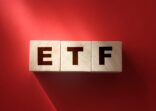Fees Review

The BOC ETF levies 0.99% management fees, higher than the 0.7% charged by the ChinaAMC ETF.
The total expense ratio (TER) or the ongoing charge for the BOC ETF was 1.03% for the year ended 31 December, 2014. The ongoing charge for the ChinaAMC ETF was much lower at 0.83%.
Conclusion

As mentioned earlier, synthetic ETFs tend to proivde the most precise replication of the indices they track. They generally have lower tracking errors and lower TERs compared to their counterparts, the physical ETFs.
However, in this head-to-head comparison, these generalisations did not prove to be true.
Drago finds the physical ChinaAMC ETF a better alternative than the synthetic BOC ETF.
“The ChinaAMC ETF seems to track the underlying index much more closely. It has lower fees, more active trading volume and less counterparty risk due to its physical replication of underlying holdings.”
Moreover, being a synthetic ETF, the BOC ETF is subject to counterparty risk. Synthetic ETFs use swap contracts to enter into an agreement with one or more counterparties who promise to pay the return on the index to the fund. This exposes investors to counterparty risk.
“An important point is that investors in synthetic ETFs are often taking the underlying credit risk of the counterparty in the derivative contract. The 2008 financial crisis has shown counterparty credit risk is a critical [vulnerability] during times of market stress,” said Drago.
To mitigate the counterparty risks, the BOC ETF seeks a collateral from AXP issuers.
“Investors should choose the ChinaAMC ETF for a closer replication to the underlying index,” Drago concluded.
















